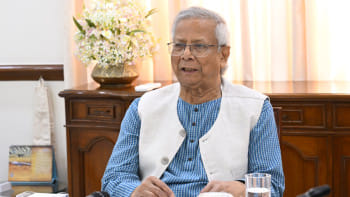Lessons to be learnt from the CU violence

The recent clashes between the students of Chittagong University and locals from the nearby Jobra village left more than 240 students injured, among others, with at least two fighting for their lives in hospital. The scale of violence, the absence of law enforcement at a critical moment, and the lack of foresight from the university authorities have raised several questions. Why was this violence allowed to erupt in the first place? Could it have been prevented if the university administration and law enforcement had acted promptly? And how can we ensure such incidents do not happen again?
The violence was first triggered by the alleged assault of a female student by a security guard at her private mess. Apparently the guard refused to let the student into the mess when she returned at around 11pm on Saturday and found the gate locked. When he finally did, he allegedly shoved her and made insulting remarks about her returning late. Once her fellow students heard about it, emotions ran high. In universities, solidarity among students is strong; an insult to one is often felt as an insult to all.
But the situation spiralled out of control because of how both sides—students and the locals—reacted. Instead of dealing with the situation calmly, villagers and students began confronting each other. And what began as a case of alleged harassment against a single student turned into a mass clash involving sharp weapons, sticks, and brickbats.
The deeper reason behind these clashes lies in the fragile relationship between CU students and residents of the nearby villages like Jobra and Fatepur. Over the years, small disputes over rent, transport, politics, and social behaviour have created mistrust between these two parties. This mistrust meant that when the female student alleged assault by the guard at her mess, it did not remain an isolated issue. It tapped into long-standing grievances.
Could this violence have been prevented? The short answer is yes. If the university authorities and law enforcement agencies had acted quickly on Saturday night, instead of coming in several hours later, the clashes could have been avoided. The guard should have been detained promptly and handed over to police, and the allegation should have been investigated. Had the authorities acted promptly, the students would not have felt that justice would not be served; they would have trusted the system rather than taking matters into their own hands.
If police or university security had been deployed around the mess and campus gates immediately after the initial altercation, larger groups would not have gathered and violence would not have escalated. Senior university officials—vice-chancellor, Pro-VCs, and proctor—should have gone to the scene to dissipate the tension; their late arrival the next day shows a lack of urgency.
The lessons from this incident are clear. University authorities and the government must act decisively to prevent such violence in the future.
The CU authorities have filed a case in connection to this incident, accusing nearly 1,100 people including activists of the banned Bangladesh Chhatra League. The government must form an independent, transparent probe committee to look into this matter—not just one controlled by CU itself. If the probe finds that students initiated or escalated the violence, they must face trial. At the same time, locals who attacked the students with machetes, rods, and brickbats must be brought to justice. There are videos and photos using which the attackers can be identified. And if negligence by the CU administration is proven, those responsible must step down.
A 21-member committee has reportedly been formed to improve ties between students and locals. This should not be a symbolic move. The committee must meet regularly, address grievances, and establish trust between students and the local population.
This entire crisis began with the allegation of mistreatment of a female student. The university authorities as well as local administration—not just at CU but every university—must adopt a zero-tolerance policy towards any form of harassment, and such complaints should be dealt with swiftly through proper mechanisms. Protecting female students on campus must be non-negotiable.
To this end, some training for professionalism and gender sensitivity at our universities is also in order. The CU proctor has drawn severe criticism over his misogynistic remarks about female students on at least two occasions, and has walked away without any consequences. When the proctor, the person responsible for campus security, can get away with making such remarks about the students he is supposed to protect, what does it say about the university authorities' sincerity about students' safety?
There are a number of lessons to be learnt from the latest spate of clashes at CU. And if these are not duly noted, such incidents will recur—in Chattogram, and in Dhaka, Rajshahi, Khulna, and elsewhere. Universities are places for enlightenment and wisdom; they must not be allowed to turn into battlegrounds. Students deserve safe campuses. Parents deserve assurance that their children will return home alive. Teachers deserve an environment where they can teach without fear.
The violence at CU should therefore be seen as a wake-up call. Immediate medical support for the injured, counselling for traumatised students, a transparent investigation, and swift justice are non-negotiable first steps. But beyond that, deeper reforms in student-community relations, campus security, and administrative accountability are urgent.
Md Abbas is a journalist at The Daily Star. He can be reached at [email protected].
Views expressed in this article are the author's own.
Follow The Daily Star Opinion on Facebook for the latest opinions, commentaries and analyses by experts and professionals. To contribute your article or letter to The Daily Star Opinion, see our guidelines for submission.

 For all latest news, follow The Daily Star's Google News channel.
For all latest news, follow The Daily Star's Google News channel. 










Comments